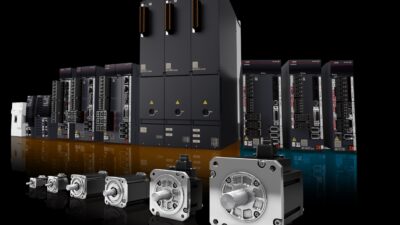Safety PLC with I/O modules on an Ethernet protocol helps maximize efficiency in body shop, decreasing downtime and adding visualization. Also read: Kia Motors safety application at a glance, with application and technology details.

For Kia Motors Corp., as well as for other automotive companies, optimizing manufacturing processes to maximize efficiency and productivity has become more important than ever. Kia Motor Slovakia (KMS) required an integrated solution where information and devices are connected seamlessly to each other.
KMS’s body shop was operating with a programmable logic control and related software; its body complete (BC) line was assembling all moving parts, with manual handling by 20 workers. But frequent breakdowns not only decreased productivity, but also sometimes caused the KMS line to stop production.
The BC line was configured with safety relays and guarded with safety scanners and relays. The safety relays had complicated wiring and long conductor routing from the safety device to the relay in the main cabinet, without a bypass function from the scanners.
The safety circuits or the safety devices caused a lot of small line stops, and it was often difficult to identify the reason for or location of the failure. Replacement often took a long time. Future line stops were anticipated because of the long and complicated safety wiring circuit.
—————————————————————–
|
Kia Motors safety application at a glance Kia Motors Corporation (KMC) was founded in 1944 and is Korea’s oldest manufacturer of motor vehicles. It is part of the Hyundai-Kia Automotive Group and recently implemented a safety solution. – To increase the market share not only in Europe but also worldwide, KMC built its first-ever European facility in Zilina, Slovakia, and started production in December 2006 with capacity of 300,000 units a year. – Kia Motor Slovakia (KMS) produced two models, the Kia cee’d and Kia Sportage in 2009. The Kia cee’d model represented more than 80% of the total production. – New SUV models, the brand new Sportage and the Hyundai ix35, were added to the production portfolio in 2010, so KMS currently produces three models. – SUV models represented more than 50% of all production in 2010. KMS produced 229,505 automobiles in 2010. – Post-installation results include: • KMS now has a flexible line with excellent reliability. • The flexible platform reduces maintenance and troubleshooting. • Problems can be identified and solved a lot quicker. • The line is easier to maintain. • KMS is now considering plans to adapt a similar solution in other lines. – Rockwell Automation technologies include: • Allen-Bradley GuardLogix PLC • EtherNet/IP, an ODVA Ethernet protocol • Allen-Bradley PanelView Plus HMI • RSLogix 5000 control system programming software • Safety Point I/O system • Customer Support and Maintenance (CSM) |
—————————————————————–
Relay-based safety controls have a long history of helping prevent hazardous encounters between worker and machine. Safety devices, such as scanners and emergency stop push buttons connected by safety relays, have been the method of choice to protect machine operators.
But relays offer limited fault diagnostics and are difficult to adapt as applications change because of related hardwiring. For these reasons, KMS sought an integrated safety solution with status visualization, higher reliability, and flexibility.
Safety controller, firmware
A safety system was proposed that comprised safety-related programmable controllers and a network. Safety controllers, instead of traditional safety relays, help customers create lean, quick, adaptable manufacturing processes to help keep operators safe.
The safety controller expanded upon existing processors in use, adding safety firmware and a safety processor. Remote safety I/O modules also were added and connected to an Ethernet network and visualization of safety conditions, alarms, emergency events and programming of control system. Visualization was developed for the existing human-machine interface (HMI). All jobs, including programming and installation, were provided from the automation provider’s customer support and maintenance (CSM) team.
The safety PLCs have a common programming environment with existing PLCs, along with common networks, I/O modules, and a common control engine, integrating Safety Integrity Level (SIL) 3 control in an environment said to be easy to use, which reduces development time and application costs.
In traditional designs, if a person entered the cell or if one device failed during production, the entire line stopped. KMS had to check each area and its devices to discover the problem. It was difficult to identify the failure, and KMS was unable to discern which safety button was pushed. The entire line was stopped until the failure was identified and resolved.
With the new design, the line was divided into five zones. Each zone had a cabinet with safety I/O modules with 23 m of wiring. Each safety I/O module was connected to the safety PLC with via Ethernet using the same programming software. Each scanner had a bypass function with the possibility of light signaling and switching.
Now when the line is interrupted, only the relevant zone is stopped, signaling the location. The operator can also easily communicate with each zone with visualization via the Ethernet protocol. The failure can be easily identified and quickly recovered while other zones remain operational.
70% less breakdown time
KMS said the solution creates flexibility reliably. The new platform reduces maintenance and troubleshooting, while helping to secure safety as required. KMS plans to expand and apply the integrated safety concept to other lines in the body and press shops.
“With the ability to identify the failure and solve problems quickly, we have dramatically increased productivity by reducing up to 70% of the safety breakdown time,” said Ondrey Vasek, maintenance manager in body, KMS. “And most of all, the line is easy to maintain and made my life easier.”
KMS is now considering adapting a similar solution in other lines.
See also the April 2011 cover story: Machine Safety Integration.



